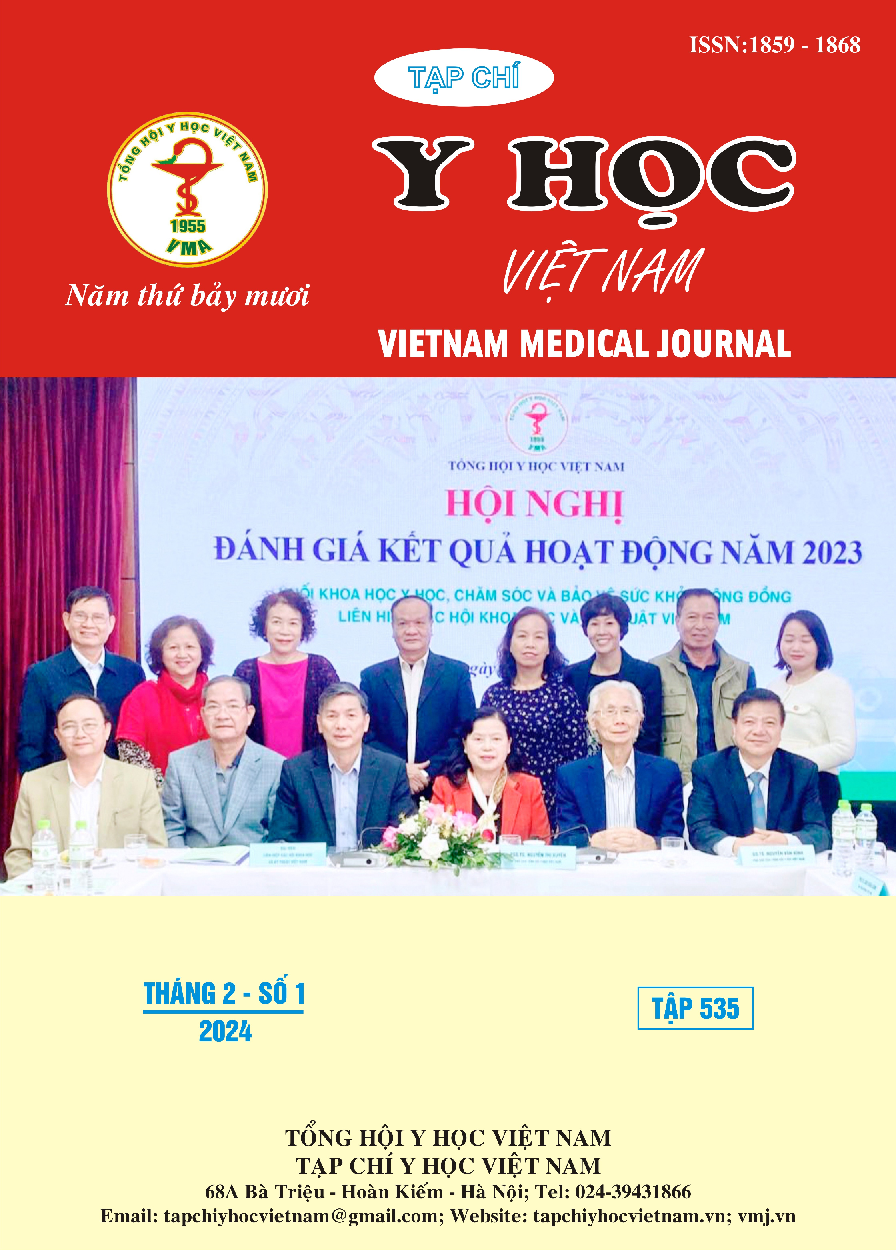ĐẶC ĐIỂM HÌNH ẢNH ĐƯỜNG BẠCH HUYẾT CHÍNH Ở BỆNH NHÂN TIỂU DƯỠNG CHẤP TỰ PHÁT
Nội dung chính của bài viết
Tóm tắt
Đặt vấn đề: Tiểu dưỡng chấp là một bệnh lý hiếm gặp nhưng tập trung nhiều ở các nước đang phát triển ở khu vực nhiệt đới. Nguyên nhân của bệnh đã được xác định là do sự thông thương giữa các nhánh bạch huyết vùng bụng với đường bài xuất. Mục tiêu: đánh giá đặc điểm hình ảnh chụp cộng hưởng từ và bạch mạch qua hạch bẹn để làm rõ giả thuyết nguyên nhân hình thành tiểu dưỡng chấp là do ứ trệ tuần hoàn trong ống ngực. Đối tượng phương pháp: Nghiên cứu tiến hành trên 33 bệnh nhân chẩn đoán tiểu dưỡng chấp bằng soi bàng quang và xét nghiệm triglyceride trong nước tiểu. Toàn bộ các bệnh nhân thực hiện chụp cộng hưởng từ và chụp số hoá xoá nền qua bơm thuốc cản quang vào hạch bẹn. Kết quả: tuổi trung bình 66,1 tuổi với tỷ lệ nữ: nam là 2:1, đa số luồng thông thương giữa nhánh bạch huyết vùng bụng với thận trái 72,7%. Phim chụp cộng hưởng từ cho thấy hiện hình ống ngực 100% nhưng chỉ có 84,8% thấy được các nhánh rò vào thận trong khi chụp số hoá xoá nền thì chỉ có 51,5% thấy ống ngực trong khi 100% bệnh nhân thấy được nhánh bạch huyết rò vào thận. Toàn bộ các bệnh nhân đều có ứ trệ tuần hoàn ống ngực ủng hộ cho giả thuyết sự tắc nghẽn ống ngực làm tăng áp lực đường bạch huyết bụng dẫn đến thông thương vào bể thận là nguyên nhân của tiểu dưỡng chấp.
Chi tiết bài viết
Tài liệu tham khảo
2. C. F. Heyns, ‘6 - Urinary Tract Diseases’, in Hunter’s Tropical Medicine and Emerging Infectious Disease (Ninth Edition), A. J. Magill, D. R. Hill, T. Solomon, and E. T. Ryan, Eds., London: W.B. Saunders, 2013, pp. 47–53. doi: 10.1016/B978-1-4160-4390-4.00006-0.
3. U. Pua, K. S. Png, and T. S. M. Tan, ‘Intranodal Lymphangiography in Chyluria’, J. Vasc. Interv. Radiol., vol. 26, no. 12, p. 1839, Dec. 2015, doi: 10.1016/j.jvir.2015.06.026.
4. P. S. R. de Araújo, V. R. de Souza Junior, A. de Souza, L. de Barros Correia Fontes, E. Brandao, and A. Rocha, ‘Chiluria in a lymphatic filariasis endemic area’, BMC Res. Notes, vol. 11, no. 1, p. 269, May 2018, doi: 10.1186/s13104-018-3357-y.
5. A. Sabbah et al., ‘Chyluria: non-enhanced MR lymphography’, Insights Imaging, vol. 14, no. 1, p. 119, Jul. 2023, doi: 10.1186/s13244-023-01461-2.
6. A. Gurevich, G. J. Nadolski, and M. Itkin, ‘Novel Lymphatic Imaging and Percutaneous Treatment of Chyluria’, Cardiovasc. Intervent. Radiol., vol. 41, no. 12, pp. 1968–1971, Dec. 2018, doi: 10.1007/s00270-018-2035-8.
7. C. N. Nguyen et al., ‘Interstitial Lymphatic Embolization with Balloon Assistance for Treatment of Chyluria’, J. Vasc. Interv. Radiol. JVIR, vol. 31, no. 3, pp. 523–526, Mar. 2020, doi: 10.1016/j.jvir.2019.09.025.
8. M. R. Rajebi et al., ‘Intranodal Lymphangiography: Feasibility and Preliminary Experience in Children’, J. Vasc. Interv. Radiol., vol. 22, no. 9, pp. 1300–1305, Sep. 2011, doi: 10.1016/j.jvir.2011.05.003.
9. E. Chen and M. Itkin, ‘Thoracic Duct Embolization for Chylous Leaks’, Semin. Interv. Radiol., vol. 28, no. 1, pp. 63–74, Mar. 2011, doi: 10.1055/s-0031-1273941.
10. N. N. Cuong et al., ‘Management of chyluria using percutaneous thoracic duct stenting’, CVIR Endovasc., vol. 5, no. 1, p. 54, Oct. 2022, doi: 10.1186/s42155-022-00333-y.


